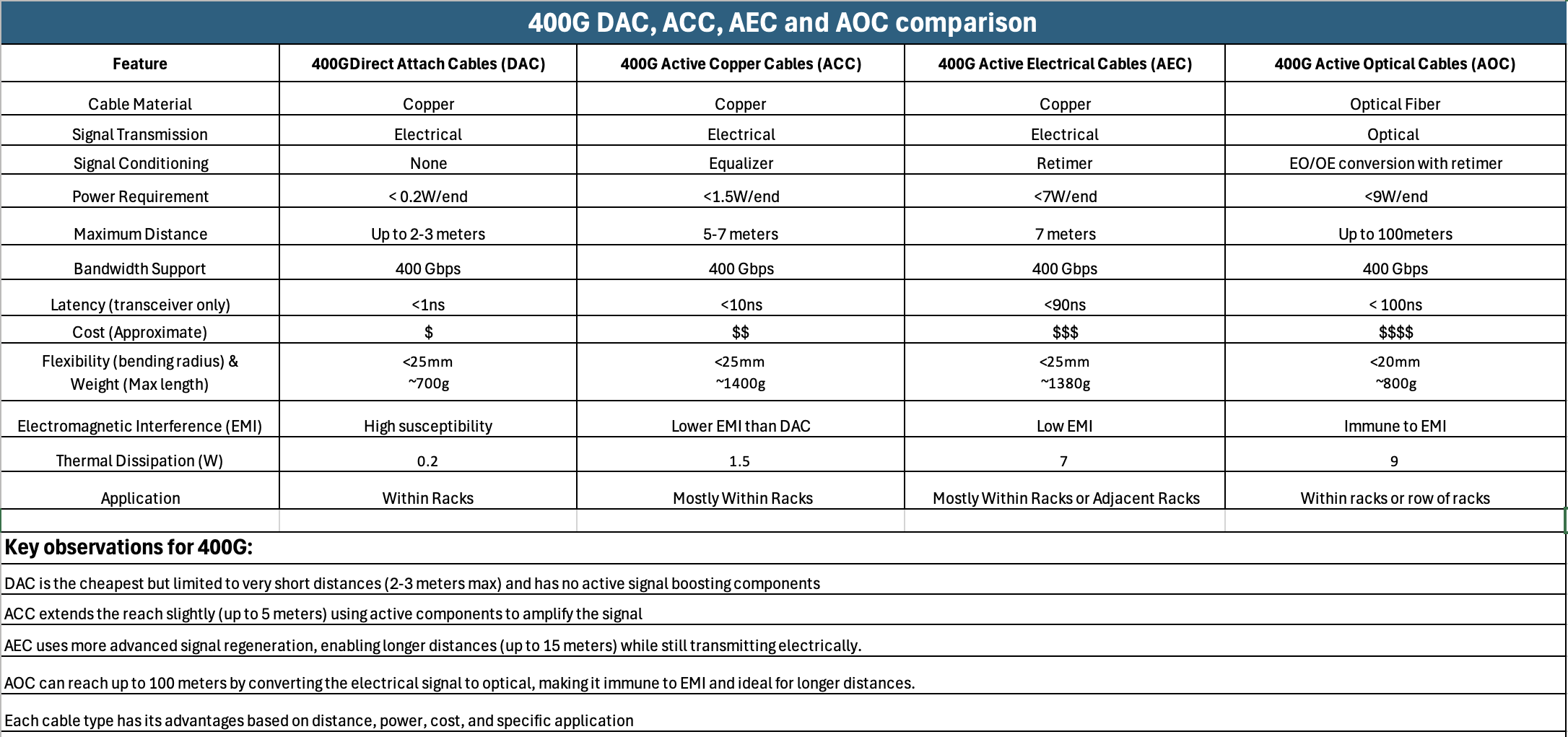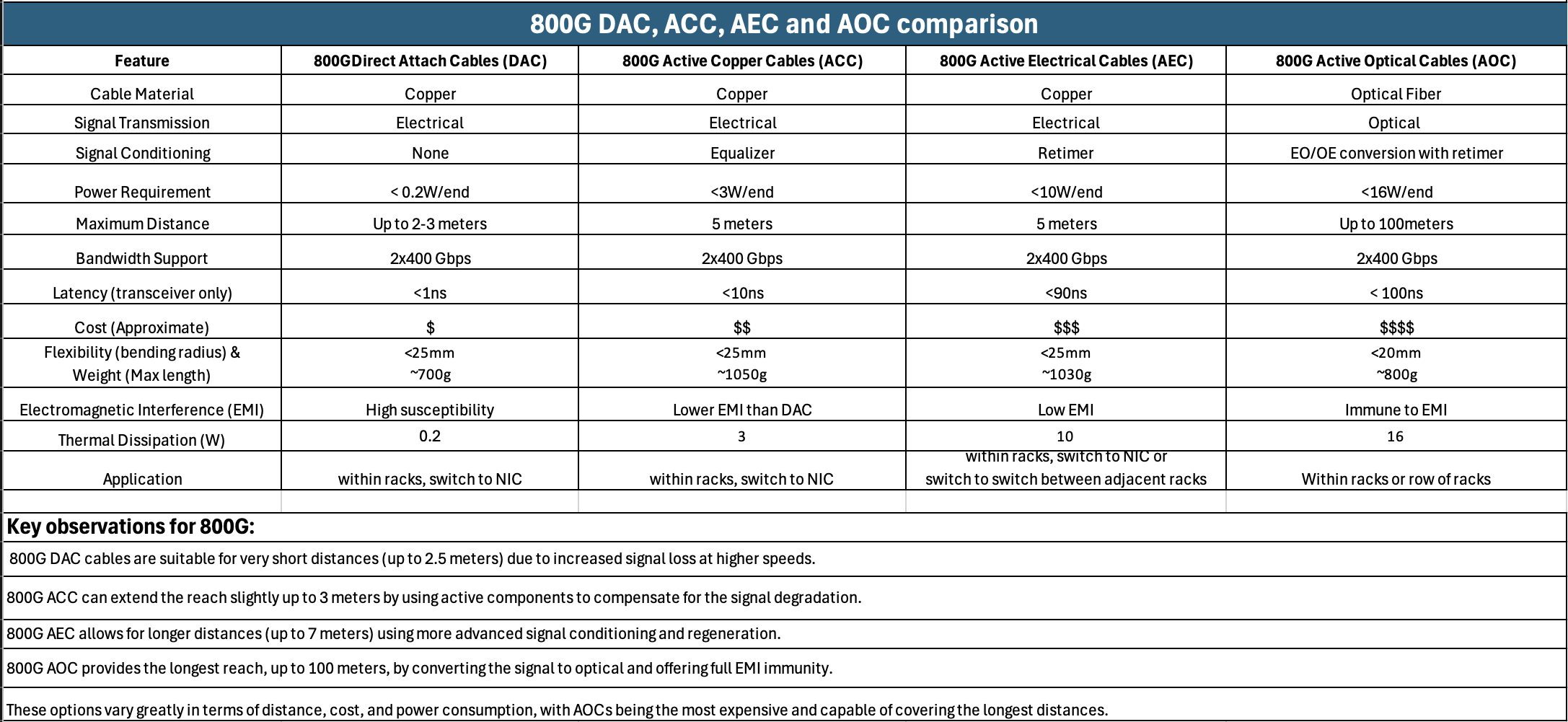Cables
Built for High-performance Networks
We offer a complete range of active optical cables for all requirements and environments. Our AOC range also includes breakout cables, eliminating the need for separate cables by consolidating multiple connections into a single cable to help reduce clutter and simplify cable management. Our cables are also multi-coded, providing you with peace of mind when using multi-vendor connections and instant plug-and-play. The cables are available in different OEM coding, including different coding for each end of breakout cables. Access high-quality, affordable, and custom-made straight and breakout active optical cables designed to support multi-line data communications, interconnecting applications, and high-performance computing.
Wide Range of Direct Attach Cables
We offer a complete range of direct attach cables for all requirements and environments. Our DAC range also includes breakout cables, eliminating the need for separate cables by consolidating multiple connections into a single cable to help reduce clutter and simplify cable management. Our cables are also multi-coded, providing you with peace of mind when using multi-vendor connections and instant plug-and-play. The cables are available in different OEM coding, including different coding for each end of breakout cables. Leverage high-quality, affordable, and custom-made straight and breakout direct attach cables designed to support multi-line data communications, interconnecting applications, and high-performance computing.
T1Nexus Cable Comparison
Breakout Cables
Also known as breakout or fanout cables, are optical fiber cables that contain several individual fibers within a single outer jacket. Each fiber within the cable is jacketed separately, providing added strength and protection. This design makes it easier to split the cable into individual fibers without needing special junctions or patch panels.
Breakout cables are commonly used in data centers and high-speed network environments to simplify network connections and reduce the need for additional hardware.
- Individual Reinforcement: Each fiber is reinforced, making the cable more rugged and durable.
- Ease of Installation: The individual fibers can be easily separated and terminated with connectors.
- Versatility: Suitable for various applications, including short riser and plenum installations, and conduits.

QUALITY & WARRANTY
ISO and TL9000 Quality with a Lifetime Warranty
We are proud to offer industry-leading products that meet ISO and TL9000 standards and are backed by a lifetime warranty.
Get the T1Nexus Advantage
Access to an extensive product portfolio
Deep technical expertise for optimal results & always-available technical support for quick resolutions
Ongoing reliability testing
Custom products and rapid prototyping capabilities
A flexible fulfillment model to support your business
Deep joint venture relationships with manufacturing partners in Taiwan and across Asia for guaranteed product assurance
Direct Attach Cables FAQs
Direct attach cables are made from Twinax copper. During production, DACs are terminated with modules that enable electrical connection directly into active equipment ports. Unlike active optical cables that use removable transceivers, DACs can be considered less flexible. DAC modules are terminated during production and cannot be removed from the cable. It’s also for this reason that all DACs are designed with a fixed length.
DAC cables are available in various high-speed options, including direct and breakout, passive and active. Here’s a brief breakdown of each option:
- Direct-connect DAC cables are used to provide a connection between one port/line card and another
- Breakout DAC cables enable one port to connect to up to 4 other ports
- Active DAC cables leverage electronics within each module which boost signals, allowing for extended transmission distances
- Passive DAC cables are cables without electronics in modules to offer signal-boosting capabilities
DACs were invented to provide high-speed electrical signal transmission within networks. Copper’s properties, specifically its high level of electrical current conduction, make it an ideal material for electrical signal transmission.
Direct attach cables are connected to networking equipment ports, allowing electrical signals to flow between devices. Examples include data center interconnection such as SATA storage devices, core network routers, core network switches, servers for 10G/40G/100G Ethernet, RADI systems, and InfiniBand.
Direct attach cables are used for the transmission of data between active networking equipment typically located on the same server rack where transmission distances are between 1m to 3m.
Here are two core benefits of using DACs:
- Cheaper than AOCs
- Lower power consumption
Active DAC can transmit signals for up to 10m, whereas passive cables can transmit signals for up to 7m.
Active Optical Cables FAQs
Active optical cables can be used for:
- Multi-line data communications
- Interconnecting applications
- Accelerating storage
- High-performance computing
Here are five benefits of using AOCs:
- Secure, reliable transport
- Longer reach and higher bandwidth
- Limited EMI/RFI exposure
- Low bit-error rate (ber) – 10-15
- Smaller size and lower weight compared to copper used in DAC cables
Get the T1Nexus Advantage
We are ready to help you identify the right solutions for your organization. Contact us to explore our extensive, high-quality product range today.
Contact Us
Book a Meeting
Have questions about our products or services? Book a meeting and we'll be in touch.




